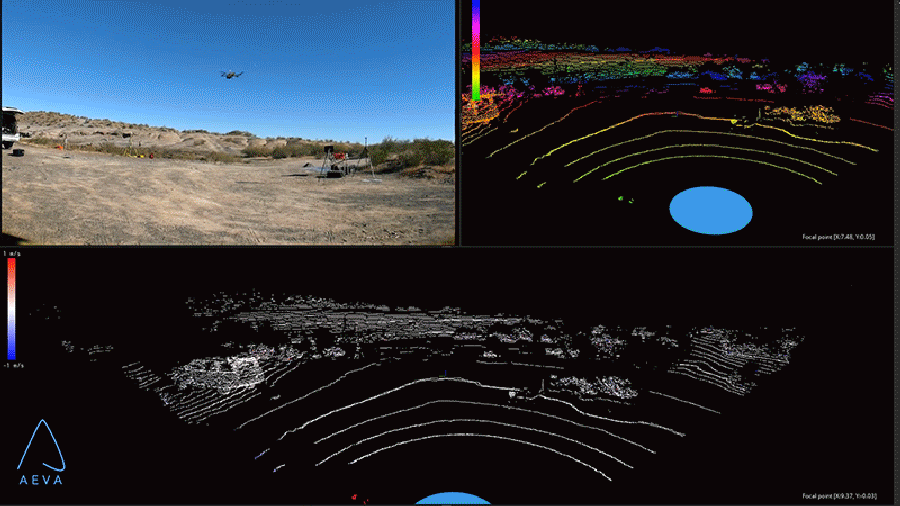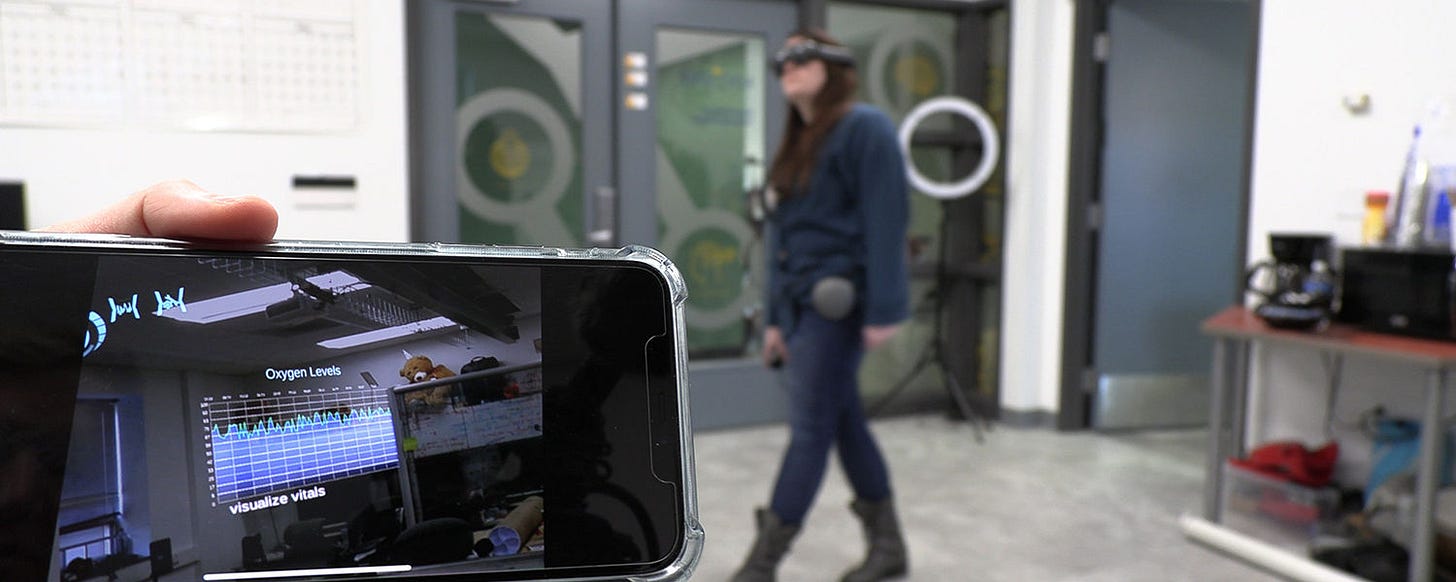A bright future for a dark Moon
Whether its economic forecasts, an update on launch timelines, or relying on laser vision in the lunar dark, topics this month illuminate the path forward for lunar exploration.
(Opinions and analysis are my own)
Forecasts
A new report out this month by Northern Sky Research (NSR) estimates that the lunar industry may generate $105 billion and witness 250+ missions by 2031.
“Early interest from terrestrial industries such as automobile, oil & gas, mining, construction and energy, is directly related to the feasibility of becoming future customers for key technology development for lunar markets." - NSR
This is more or less in line with a report published by PwC last year, which estimated the lunar market will pass $170 billion by 2040.
Putting these figures into perspective, depending on which source you use, the size of the global space economy is currently about $370 to 450 billion1 and anticipated to grow to $640 billion by 2030.2 Morgan Stanley famously projected the industry could reach $1.1 trillion by 2040 as a “most likely outcome”.
This would imply the lunar market could eventually make up about 15% of the entire industry, however, I’m uncertain if or to what extent the projections above considered the potential of the lunar industry in the overall makeup of the future space economy. Perhaps if the lunar industry begins to takes shape, we may see updates to these forecasts with increased figures. In fact, earlier this year, NSR already suggested global space industry revenues may exceed $1 trillion by 2030.
With regard to the number of lunar missions in the next decade, different numbers have been thrown about: CSIS recently tallied 106 missions; Bryce Space & Technology counted 95 by 20303; and, Euroconsult counted 51 missions by 2029. Additionally, NSR categorized 70 of its 250+ missions as being commercial missions, while CSIS identified 24 of its 106 missions as commercial.
Timelines
The number of missions will always fluctuate as a result of shifting timelines, cancellations, and new additions. For example, at the start of this year, I published a calendar of the 10 missions planned for 2022 and many of those timelines have already changed due to a whole variety of reasons.
In the following chart, I list up each of those 10 missions with their planned launch schedules from three months ago compared to their updated timelines as of today. The timelines provided are only what has been officially or publicly stated by company representatives, regardless of speculation or other realities.
Notes for each corresponding mission:
NASA tweeted the updated timeline in March. This month, SpaceNews reported the spacecraft is ready for launch no earlier than May 3.
In February, NASA said the next possible launch windows are May 7-21, June 6-16 and June 29-July 12. However, due to a failed test this month, Ars Technica’s Eric Berger suggested the earliest launch may be in Fall.
This month, the European Space Agency pulled out of its joint lunar missions with Russia, including Luna-25. Despite this, Russia plans to move forward, targeting an August launch. However, further tests could delay launch until later in 2022. Scientific American provided a good synopsis of the situation. The head of Roscosmos also said he will meet with Chinese colleagues in May to discuss cooperation.
I originally wrote “Q2 2022” based on English-language reports stating SLIM would launch in April. However, the Yomiuri Shimbun this month reported the launch will occur by the end of March 2023, and, indeed, JAXA’s website says SLIM will launch during fiscal year 2022. As the fiscal year in Japan runs from April 1 - March 31, I assume that is the origin of the “April” reporting. Last month, the SLIM project manager said testing on the flight model is ongoing and launch is scheduled for 2022. However, SLIM will launch on a rideshare with a JAXA satellite called XRISM, which — according to an XRISM team member, several academic papers, and NASA — will launch in 2023.
Korean-language reports this month declared KPLO’s launch to be precisely at 8:33 am on August 1 Korea time (July 31 local time). August 1 has been mentioned as the official launch date for at least 2 years.
This month, Astrobotic unveiled a near-ready flight model of its lunar lander. CEO John Thornton said things are “on track for a flight in Q4 of this year,” depending on the readiness of their launch provider, ULA, which will debut its new Vulcan rocket. According to an assessment by Eric Berger, ULA would need about 8 months after receiving engines from its supplier Blue Origin to prepare the rocket for its flight carrying Astrobotic’s lander. Last month, ULA CEO Tony Bruno said he expects to receive the engines “in the middle of the year,” but remains confident to fly in 2022. Astrobotic’s lander will move to final testing in two months.
In a release published this month, ispace said its lander development is currently still on track for a launch as early as Q4 2022. The company’s current plan as of April is to complete assembly and integration of its flight model and move into final testing by early June.
At the start of 2022, Intuitive Machines announced its planned Q1 launch would be pushed until later in 2022. NASA’s website says the launch is scheduled for “late 2022”. An official update is expected soon.
This is the only one not officially announced by a company representative, but an Intuitive Machines spokesperson seemingly spoke with SpaceNews who wrote that the mission is moving from Q4 2022 to 2023, and more information will be announced soon.
The ISRO Chairman reportedly told the Times of India this month that the mission is expected to be pushed to the next year (2023).
Correction May 1, 2022: In my original post, I had ISRO’s Chandrayaan-3 tentatively marked as “August 2022 (TBD)”. Special thanks to Jatan Mehta (Jatan’s Space) for bringing my attention to the Times of India article!
Two major Japanese insurance companies are developing policies to insure commercial lunar missions.
In a first for their sector, Mitsui Sumitomo Insurance intends to provide coverage for ispace’s lunar lander from launch to landing during its first mission, and Tokio Marine Nichido will insure Dymon’s rover, which will travel to the Moon on Astrobotic’s lander. Both missions may take place as early as this year.
While insurance for launch vehicles and satellites in Earth’s orbit is common, insurance for commercial lunar exploration is a yet another new business to spur from the nascent lunar industry. The availability of lunar insurance may even encourage new entrants to participate in the industry by reducing risks.
As ispace noted in a previous release:
The creation of lunar exploration insurance for the future lunar industry is a reflection of the history of insurance. The earliest form of well-developed general insurance dates back to the medieval era, created for pioneers who voyaged out to sea. Facing the unknown, the seamen of this time were able to utilize marine insurance to mitigate the risk of their challenging journey.
NASA is working with companies to develop a mobile scanning device for future lunar astronauts to map and navigate the lunar surface.
Using the latest developments in lidar technology, the scanner can provide real-time precision navigation, while creating ultra-high-resolution 3D maps of the surrounding terrain. The prototype is a 40 lb. (18 kg) backpack, but the plan is to miniaturize it down to the size of a soda can to be installed on an astronaut helmet. NASA is working with Aeva and Torch Technologies on the project.
This will be a critical tool for explorers traveling on foot in total darkness near the lunar south pole, where the sun never rises more than three degrees above the horizon, relieving astronauts of the need to haul around lighting rigs on their excursions.


NASA is also exploring ways to utilize augmented reality in spacesuit design by challenging students to develop information displays for astronauts on the surface of the Moon to continuously track things like the location of their rover and vitals such as oxygen level and heart rate. A joint team from USC and University of Arizona is looking at how to integrate geology into an interface to improve the science of lunar sample collection.

China plans to deploy a small constellation around the Moon to support lunar communications and navigation.
This is the latest in an ongoing series of announcements to deploy a web of communications satellites in lunar orbit. Last month, I wrote about such plans by Lockheed Martin, the US Air Force, and startup company Aquarian Space, and in May of last year, I featured the European Space Agency’s clever Moonlight initiative, which has awarded two industry consortiums to study how satellites orbiting the Moon could provide commercial services for lunar operations.
Image of the Month

A microscopic amount of lunar regolith collected by Apollo 11 astronaut Neil Armstrong sold for $504,375 in an auction this month. The dust, which was so small that the auction company could only cite their size in microns, was found in the seams of a bag used to hold the first lunar sample collection. Being the only known lunar regolith sample from Apollo 11 that can legally be sold, the price was determined based on other lunar samples that have been sold illegally, as well as with consideration to the historical significance.
In 2020, NASA selected four companies to collect regolith from the Moon’s surface and transfer ownership to the agency. Companies will collect a small amount of lunar regolith and NASA will determine retrieval methods at a later date. Awardees priced their anticipated collections ranging from $1 to $15,000.
Disclaimer
The author of this newsletter is employed by ispace, inc. However, this is a private activity and all opinions and analysis are my own. The view expressed should in no way be taken to reflect the official opinion of ispace. This report does not constitute a sales offer and in no event shall it be liable for any investment decision based on the information included in this report. I cannot guarantee that the information included is accurate or complete. Please read the full ‘Disclaimer’ in the ‘About’ section.
Space Foundation stated that the global space economy rose to $447 billion in 2020 in its “The Space Report 2021 Q2” report, a number the organization maintains in its “State of Space 2022” published in January 2022. Of note, Euroconsult also published its “Space Economy Report” in January 2022, in which it provided a more modest estimate of $370 billion for the 2021 global space economy. However, Bryce Space & Technology estimated the 2019 space economy to be $366 billion in its “2019 Global Space Economy at a Glance” report.
In its “Space Economy Report” published in January 2022, Euroconsult calls for the space economy to reach $642 billion by 2030. Of note, the “Space Sector Report” by the UK Parliament (undated) cites the OECD and Space Foundation as forecasting the 2030 space economy to reach $590 billion or $720 billion, respectively.
Projected Exploration Missions (2020-2030); Bryce Space & Technology, Sept 2 2020. Revised Sept 8 2020.



